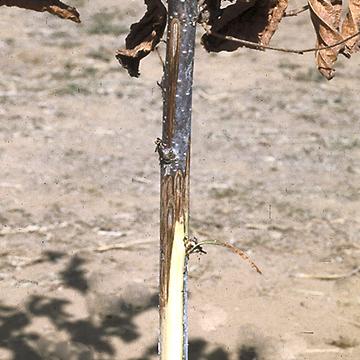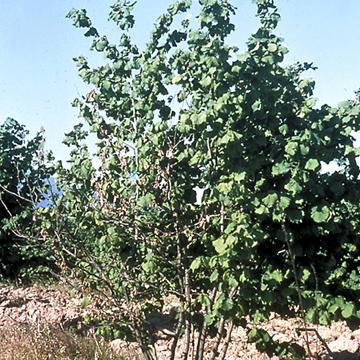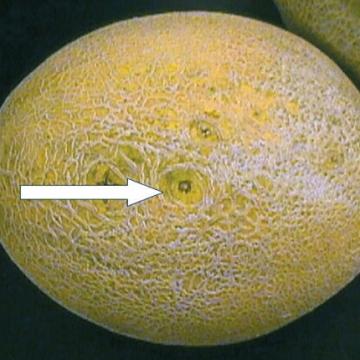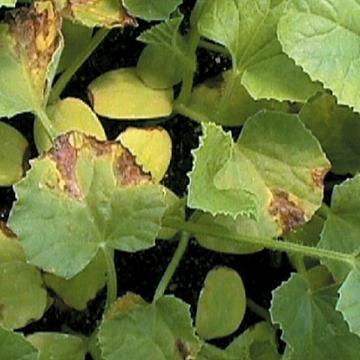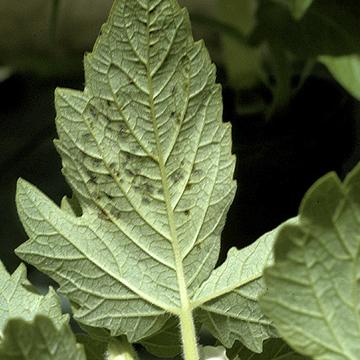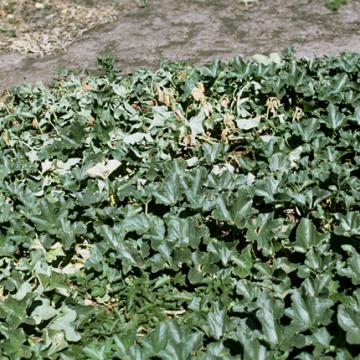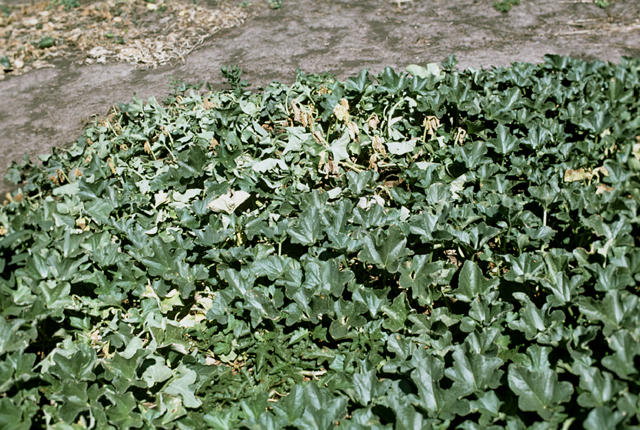DISEASE: Bacterial blight
HOST: Hazelnut
Diseased young tree with discoloration of the cambium. Dieback of young twigs and branches is characteristic. Other typical symptoms are bud and twig necrosis and small, angular or round, water-soaked leaf spots.
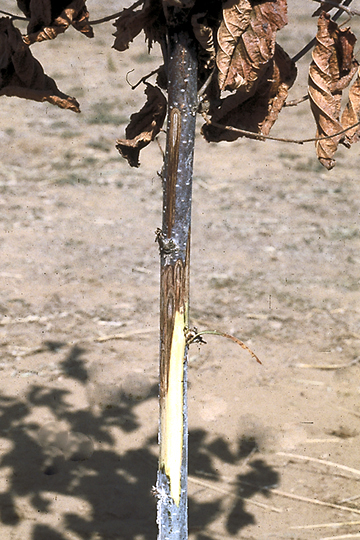
Bacterial blight | Hazelnut
DISEASE: Bacterial blight
HOST: Hazelnut (Corylus americana)
PATHOGEN: Xanthomonas arboricola pv. corylina
SOURCE: J. Pscheidt
DISEASE: Bacterial canker
HOST: Hazelnut
Primary symptoms are failure of buds to break and withering and death of new foliage in spring. Dead leaves remain attached to limbs after normal leaf fall.
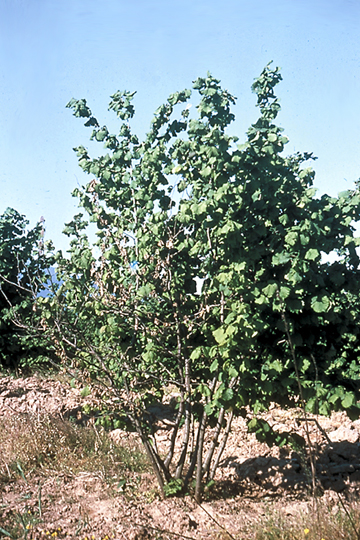
Bacterial canker | Hazelnut
DISEASE: Bacterial canker
HOST: Hazelnut (Corylus americana)
PATHOGEN: Pseudomonas syringae pv. avellanae
PATHOGEN SYNONYM: Pseudomonas avellanae
SOURCE: P. Psalidas
DISEASE: Bacterial fruit blotch
HOST: Cantaloupe
Early stage of disease with discolored blotches on the surface.

Bacterial fruit blotch | Cantaloupe
DISEASE: Bacterial fruit blotch
HOST: Cantaloupe (Cucumis melo var. cantalupensis)
PATHOGEN: Acidovorax citrulli
PATHOGEN SYNONYM: Acidovorax avenae subsp. citrulli
SOURCE: D. B. Langston
DISEASE: Bacterial fruit blotch
HOST: Cantaloupe
View of disease path from rind to internal rotting of melon.
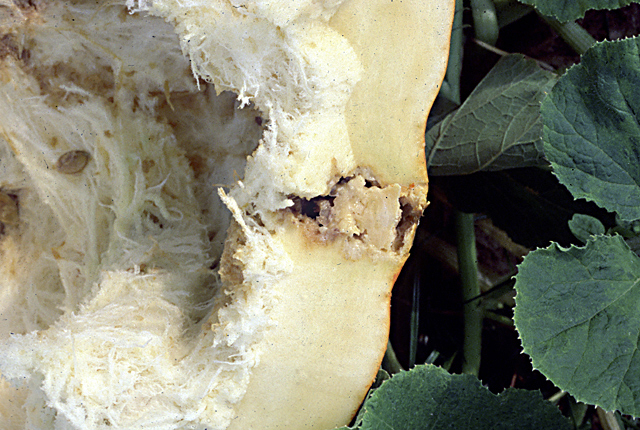
Bacterial fruit blotch | Cantaloupe
DISEASE: Bacterial fruit blotch
HOST: Cantaloupe (Cucumis melo var. cantalupensis)
PATHOGEN: Acidovorax citrulli
PATHOGEN SYNONYM: Acidovorax avenae subsp. citrulli
SOURCE: R. Gitaitis
DISEASE: Bacterial fruit blotch
HOST: Cantaloupe
Leaf spot stage. Lesions start small and may coalesce, forming large, brown necrotic areas.

Bacterial fruit blotch | Cantaloupe
DISEASE: Bacterial fruit blotch
HOST: Cantaloupe (Cucumis melo var. cantalupensis)
PATHOGEN: Acidovorax citrulli
PATHOGEN SYNONYM: Acidovorax avenae subsp. citrulli
SOURCE: D. B. Langston
DISEASE: Bacterial leaf spot
HOST: Sesame
Leaf with water-soaked lesions.
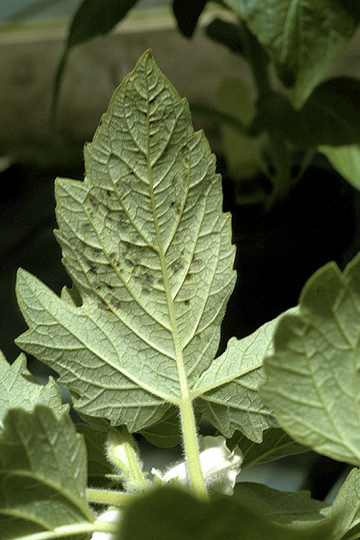
Bacterial leaf spot | Sesame
DISEASE: Bacterial leaf spot
HOST: Sesame (Sesamum orientale)
PATHOGEN: Pseudomonas syringae pv. sesami
SOURCE: M. Schroth


